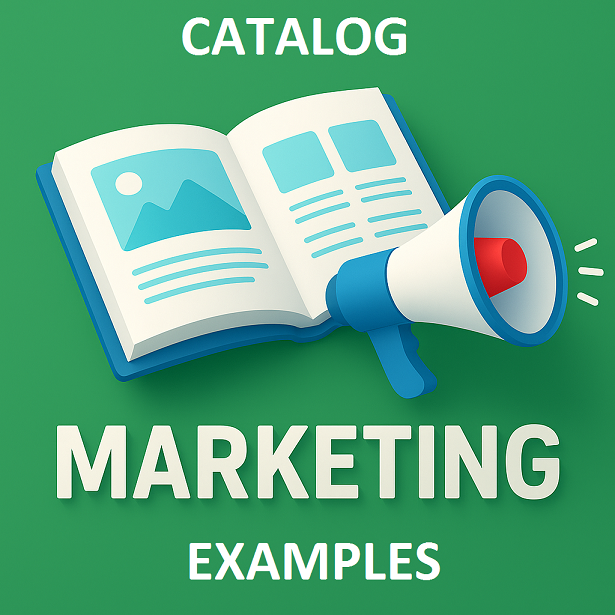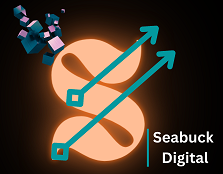
Introduction — Why catalog marketing still matters in 2025
Catalogs used to mean thick mailers sitting on coffee tables. Now they’re flexible marketing engines: sometimes a physical booklet, sometimes a shoppable PDF or lookbook, sometimes an AR-enabled brochure. If you’re searching for catalog marketing examples that actually move the needle in 2025, focus on brands that treat catalogs as experience rather than just a price list.
What “catalog marketing examples” means today
- A modern catalog can be:
- a targeted print booklet (small batch),
- a rich flipbook or PDF,
- an interactive email/lookbook, or
- a hybrid with QR/AR that links print to product pages.
- Brands that win combine beautiful design, data-driven personalization, and seamless print→digital journeys.
What makes a great catalog in 2025
Design: look, feel, scannability
Good catalogs are visually scannable: strong pictures, clear product shots, consistent styling and obvious CTAs (codes, short URLs, QR). Think of each spread as an Instagram post that still needs to sell when a reader looks away.
Personalization: variable data & targeted versions
Variable data printing and audience-specific versions let you send catalogs that feel curated — a tradesman sees heavy-duty tools, while a homeowner sees lifestyle solutions. This isn’t theoretical: modern printing and PIM tools make multi-version catalogs cost-effective and trackable.
Digital + print integration: QR, AR, shoppable links
The magic is bridging the tactile and the trackable. QR codes, AR tags, and custom landing pages turn printed pages into digital funnels — giving you measurable ROI and richer product demos.
Case Study 1 — IKEA: from iconic annual catalog to targeted brochures
What IKEA changed
IKEA retired the massive once-a-year global catalog and shifted to smaller, targeted brochures and digital inspiration pieces while keeping digital experiences (AR room placement) front and center. Their site now emphasizes brochures by room and purpose rather than one monolithic book.
Why this works: inspiration over inventory
IKEA traded mass distribution for relevance. Brochures let them test creative directions, reduce waste, and integrate AR links so consumers can visualize products in their homes — a model that keeps the inspirational spirit of the old catalog but fits modern attention spans.
Case Study 2 — Patagonia: the journal-style catalog that sells values
How Patagonia uses storytelling
Patagonia’s catalog reads like a short magazine: environmental reporting, product trials, and authentic photography. It’s less “buy this now” and more “join a movement,” with product calls-to-action woven into long-form storytelling. You can still request their print journal — it’s part catalog, part manifesto.
Why this works: trust and mission-driven loyalty
When your audience buys your values, the catalog becomes a brand-builder. Patagonia’s approach creates long-term CLTV — customers return because they identify with the mission, not just the fleece.
Case Study 3 — Sephora: AR + shoppable e-catalogs
Sephora’s Virtual Artist and interactive content
Sephora has layered AR try-on, AI color-matching, and shoppable digital lookbooks into its catalog-like content. The Virtual Artist (and related features) lets shoppers try lipstick and cheek products virtually, then head straight to a checkout flow — a powerful friction reducer.
Why this works: reduce friction, boost conversion
Virtual try-ons translate to higher confidence and fewer returns. When a catalog (even an e-catalog) helps users *see* a result, conversion rates rise and the catalog feels valuable, not decorative.
Case Study 4 — Grainger: B2B catalogs that remain authority tools
Print + digital catalogs for professional buyers
Grainger still produces massive product catalogs and supplements — but pairs them with searchable digital catalogs and industry-specific versions. For pros, those catalogs are reference tools, not impulse-readers.
Why this works: depth, trust, searchable reference
B2B buyers want details: specs, cross-references, certifications. A catalog that doubles as a reliable reference builds stickiness and reduces returns — especially when paired with real-time digital pricing.
Case Study 5 — Bonobos: shoppable lookbooks from a digital-first brand
How lookbooks act like lightweight catalogs
Bonobos and similar DTC brands publish seasonal lookbooks that are essentially slim catalogs — aspirational imagery plus direct shoppable links. These perform well over email and social because they’re both pretty and actionable.
Why this works: aspirational + transactional
Lookbooks convert when they show complete outfits and make it simple to buy the whole look. For DTC brands, the lookbook is a low-cost catalog that plays well on mobile.
Case Study 6 — Huckberry: curated editor-led catalogs
Community + curation = catalog that feels like a magazine
Huckberry treats each catalog/lookbook like an editorial piece — curated gear, stories from travelers, and “why we picked this” notes. It reads like a niche magazine that happens to sell.
Why this works: niche identity and repeat visits
When a catalog doubles as content (stories, tips), readers come back for inspiration, not just deals. That creates higher engagement and better email open rates.
Case Study 7 — Glossier: zines, product guides and UGC-led catalogs
Glossier’s small-format guides and digital lookbooks feel personal and social — they lean on UGC and community moments. This intimacy fits the brand and moves product via trust.
Case Study 8 — Allbirds: sustainability-first lookbooks and guides
Allbirds uses its product mission inside lookbooks: material stories, carbon-footprint data and product demos. That educational tone persuades eco-conscious buyers more effectively than promos.
Case Study 9 — J.Crew & the printed-catalog revival
Some legacy retailers (J.Crew among them) have reintroduced printed catalogs because curated print can cut through digital noise and evoke nostalgia — when it’s curated and on-brand it becomes a premium touchpoint.
Case Study 10 — Cabela’s / specialty retailers: QR + dynamic content
Specialty retailers embed QR codes and personalized URLs so printed pages link to dynamic product pages, videos and tracked journeys — turning offline interest into measurable online conversions.
Quick checklist — What to steal from these catalog marketing examples
- Design: big imagery, scannable spreads, clear CTA.
- Personalize: A/B test multi-version runs using VDP (variable data printing).
- Bridge print & digital: QR codes, short URLs, AR tags.
- Make it useful: reference content for B2B; stories for DTC.
- Measure: unique promo codes, trackable scan URLs and landing pages.
Conclusion — Catalogs aren’t dead; they’re evolving
The best catalog marketing examples in 2025 don’t treat catalogs as relics. They treat them as flexible content — sometimes printed, sometimes flipped on a phone, always designed to guide a customer toward a measurable action. Want inspiration? Look to brands that paired beautiful design with measurable tech and a clear audience focus — that’s the sweet spot.
FAQs
Q1: Are printed catalogs still worth the investment in 2025?
Yes — when targeted and integrated with digital tracking (QRs, custom landing pages). A small, well-targeted run often outperforms mass distribution.
Q2: How do I measure ROI from a print catalog?
Use unique promo codes, trackable short-URLs/QRs, and landing pages tied to catalog campaigns. Tie scanned behavior back to CRM to measure LTV.
Q3: What’s a quick way to add personalization to a catalog?
Start with variable data printing for the cover or product recommendations, then test segmented mailings (by purchase history or region).
Q4: Which tech bridges print and digital best?
QR codes (with dynamic destinations), AR tags for product demos, and shoppable flipbooks. Track scans to retarget visitors online.
Q5: Which category benefits most from catalogs — B2C or B2B?
Both. B2B catalogs remain reference standards (deep specs). B2C catalogs work best when they inspire (lookbooks, editorial, or mission-driven stories).
Read More of our Articles below:
